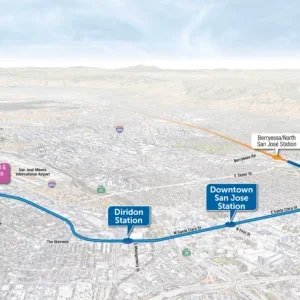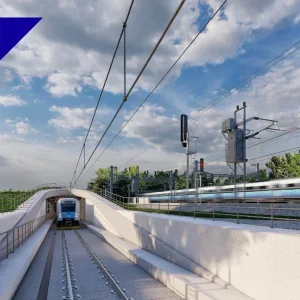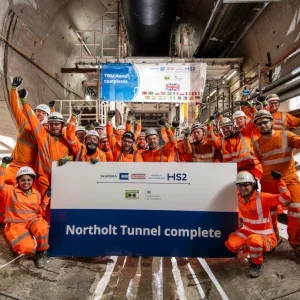On 8 March construction started on the 2.1km Törnskog tunnel to the north of Stockholm, in Sweden, as part of the 16km Norrortsleden road scheme. Client, the Swedish National Road Administration (SNRA), awarded the contract to Oden Anläggning AB in March who rapidly moved onto site to commence work.
The scheme features two tunnels, one of 92m2 and the other of 102m2 face area, which are to be driven through granite at depths varying from 10m-50m below the surface.
The tunnels will be excavated from both ends by drill and blast techniques using two Atlas Copco WL3C three boom drill jumbos, one L2C twin boom jumbo and a Boltec rig for automated rockbolting. Smoothwall blasting techniques are employed for profiling with emulsion explosives, the round is initiated with Nonel detanators. The 5m round will be mucked using Caterpillar 980 and 988 wheeloaders, mucking onto 30 tonne trailers. Consultant Sweco VBB AB advised the client on lining design. The primary support installed is pattern rockbolting using 3m-4m bolts. A sprayed fibre reinforced concrete lining of 40mm-100mm is applied 100m back from the tunnel face, to reduce the risk of blast vibration damage. There are 72 working hours scheduled per week, but only three rounds per tunnel per week planned. This is due to the continuous pregrouting that is required every three rounds and blast vibration limits.
The budget for the Törnskog tunnelling works is US$60.2M out of a total of US$66.5M for this section of the road project. Tunnel construction is expected to be complete by the end of June 2007 and completion of the whole scheme by 2008 should result in improved road connections amongst municipalities as well as environmental benefits and enhanced road safety.
The Swedish government are also financing another tunnel as part of the Norrortsleden road scheme, the Löttinge tunnel. This tunnel is much shorter at 1.1km long and comprises a single tube with the traffic lanes separated by a concrete wall, but in some ways it is much more unusual than its longer sibling.
The face area is larger at 145m2, but ground conditions are similar, as is the method of excavation and lining. However, what makes this tunnel unusual is that it is being used by SNRA to test a new procurement model for possible future adoption.
Currently in the process of prequalifying prospective tenderers, the SNRA have developed the new model in a bid to increase efficiency and reduce the total cost of constructing and maintaining the road network.
The successful bidder will have complete responsibility for design, construction, operation and maintenance of the project, within certain conditions on construction and long term performance. If the model is deemed a success, it will give the SNRA an extra option when choosing the best contract form to use for a given project, rather than rely upon the traditional design and build model.







